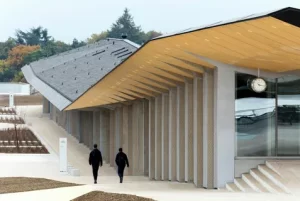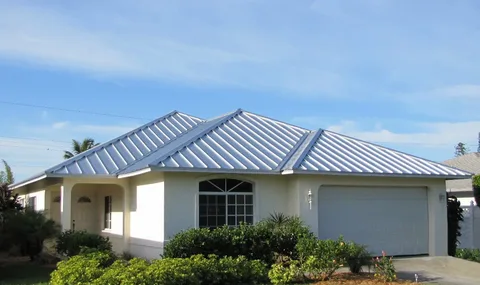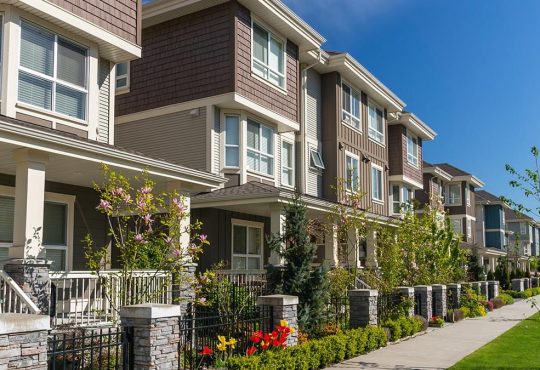
Roofing is one of the essential parts of a building structure. It protects the interior from external elements, including rain, snow, heat, and cold. However, like any other part of a building, a roof can experience problems, which can compromise its functionality and safety. It is essential to know the common roofing structure problems and how to fix them. This article will discuss the most common Roofing Structure problems and their possible solutions.
1. Leaks
Leakage is a widespread problem in roofing structures. It can cause severe damage to the building’s interior, including walls, ceiling, insulation, and electrical wiring. Leaks can occur due to various reasons, including damaged shingles, cracks, missing or broken tiles, and worn-out sealants.
Solution: The first step in fixing a roof leak is to identify its source. This requires a thorough inspection of the roof. Once you have located the leak, you can proceed to fix it. If the cause is damaged shingles, you can replace them. The tiles are broken, you can replace them with new ones. The sealant is worn out, you can apply a new coat. However, if the leak is due to a significant structural problem, it is advisable to seek professional help.
2. Ponding Water
Ponding water refers to the accumulation of water on the roof’s surface due to poor drainage. This can lead to various problems, including leakage, mold growth, and structural damage. Ponding water can occur due to various reasons, including clogged gutters, inadequate roof slope, and damaged drainage systems.
Solution: The best way to fix ponding water is to ensure proper drainage. This involves cleaning the gutters and downspouts regularly and ensuring that the roof slope is adequate. You can also install additional drainage systems, such as scuppers and roof drains, to channel the water away from the roof’s surface.
3. Blistering
Blistering is a problem that occurs when the roof’s surface develops bubbles or blisters due to trapped moisture. This can weaken the roof’s structure and lead to leakage and other problems. Blistering can occur due to various reasons, including poor installation, inadequate ventilation, and excessive moisture.
Solution: The best way to fix blistering is to identify its cause and address it. If the problem is due to poor installation, you can reinstall the roof. It is due to inadequate ventilation, you can install vents to improve air circulation. If the problem is due to excessive moisture, you can install a vapor barrier to prevent moisture from penetrating the roof’s surface.
4. Shrinkage
Shrinkage is a problem that occurs when the roof’s surface material contracts due to changes in temperature. This can cause the roof to develop cracks and tears, which can lead to leakage and other problems. Shrinkage can occur due to various reasons, including poor installation, inadequate ventilation, and exposure to extreme weather conditions.
Solution: The best way to fix shrinkage is to replace the damaged material. This involves removing the affected area and installing new material. If the problem is due to poor installation or inadequate ventilation, you can address these issues before replacing the material.
5. Flashing Problems in Roofing Structure
Flashing is the material that seals the joints between the roof and other parts of the building, such as chimneys, vents, and skylights. Common problems can occur due to various reasons, including poor installation, exposure to extreme weather conditions, and wear and tear.
Solution: The best way to fix flashing problems is to identify the cause and address it. If the problem is due to poor installation, you can reinstall the flashing. If it is due to exposure to extreme weather conditions, you can install additional flashing to provide extra protection.

Pre-fabricated Roofing Structures: Types, Materials and Design Options
Roofing structures are an essential component of pre-fabricated buildings. Pre-fabricated buildings, also known as prefab buildings, are structures that are manufactured off-site and assembled on-site. These buildings are designed to be easy to assemble, cost-effective, and environmentally friendly. They have become increasingly popular in recent years, particularly in areas where there is a shortage of skilled labor or limited construction time. Roofing structures in pre-fabricated buildings are designed to be lightweight and easy to install. They are typically made from materials such as steel, aluminum, or composite panels. These materials are chosen for their durability, resistance to weather, and ease of maintenance.
Pre-Fabricated Buildings Design:
Pre-fabricated buildings is designed to be airtight and waterproof to prevent any leaks or damage to the building’s interior. The roof is typically installed as a single unit that is attached to the building’s walls using fasteners or adhesive. This ensures that the roof is secure and can withstand any weather conditions. The design of the roofing structure in pre-fabricated buildings is also important for the building’s energy efficiency.
Many pre-fabricated buildings are designed to be energy-efficient, and the roofing structure plays a significant role in achieving this. The roof is designed to provide insulation to the building, reducing heat loss during the colder months and keeping the building cool during the hotter months.
In summary, roofing structures are an essential component of pre-fabricated buildings. They are designed to be lightweight, durable, and easy to install. The roofing structure is also designed to be airtight and waterproof to prevent any leaks or damage to the building’s interior. Additionally, the design of the roofing structure plays a significant role in achieving the building’s energy efficiency.
Flat roofing structures have gained popularity in recent years due to their modern and sleek design, but they also come with their fair share of advantages and disadvantages. In this article, we will discuss the pros and cons of flat roofing structures to help you make an informed decision.

Advantages of Flat Roofing Structure:
- Easy Maintenance: One of the significant advantages of flat roofs is that they are easier to maintain compared to sloped roofs. The lack of pitch on flat roofs makes it easier to access and clean debris, leaves, and other materials that may collect on the roof’s surface.
- Cost-Effective: Flat roofs require less material to construct compared to sloped roofs, making them more cost-effective. Additionally, flat roofs offer more space to install solar panels, HVAC units, and other equipment that can reduce energy costs.
- Versatility: Flat roofs offer a range of design options that allow for more versatility in building design. For instance, they can be used for roof gardens, outdoor living spaces, and even as a space to store equipment.
- Accessibility: Flat roofs offer easier access to the building’s HVAC system, making it easier to maintain and repair.
Disadvantages of Flat Roofing Structure:
- Drainage Issues: The lack of slope on flat roofs makes it difficult for water to drain away effectively. If water is left to accumulate on the roof, it can cause damage to the roof’s surface and the building’s structure.
- Susceptible to Leaks: Flat roofs are more susceptible to leaks due to their design. The lack of slope means that water can pool in certain areas, leading to the breakdown of roofing materials and ultimately causing leaks.
- Limited Insulation: Flat roofs have limited space for insulation, making it challenging to achieve the same level of energy efficiency as sloped roofs.
- Shorter Lifespan: Flat roofs have a shorter lifespan compared to sloped roofs, with an average lifespan of 10-20 years. This is due to the constant exposure to the elements and the accumulation of water on the roof’s surface.
Conclusion:
In conclusion, flat roofing structures offer several advantages, including easy maintenance, cost-effectiveness, versatility, and accessibility. However, they also come with some disadvantages, including drainage issues, susceptibility to leaks, limited insulation, and a shorter lifespan. When considering a flat roof for your building, it’s essential to weigh these pros and cons to determine whether it’s the right choice for you.




